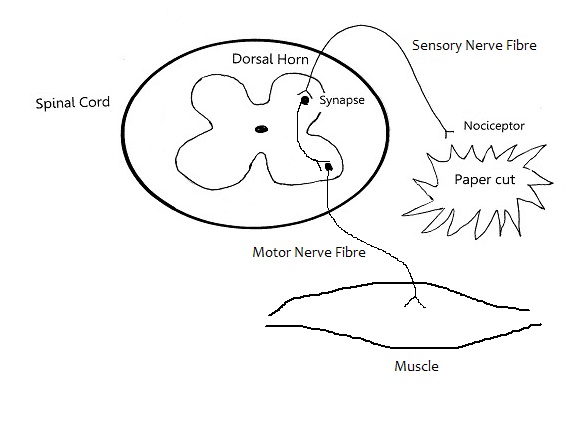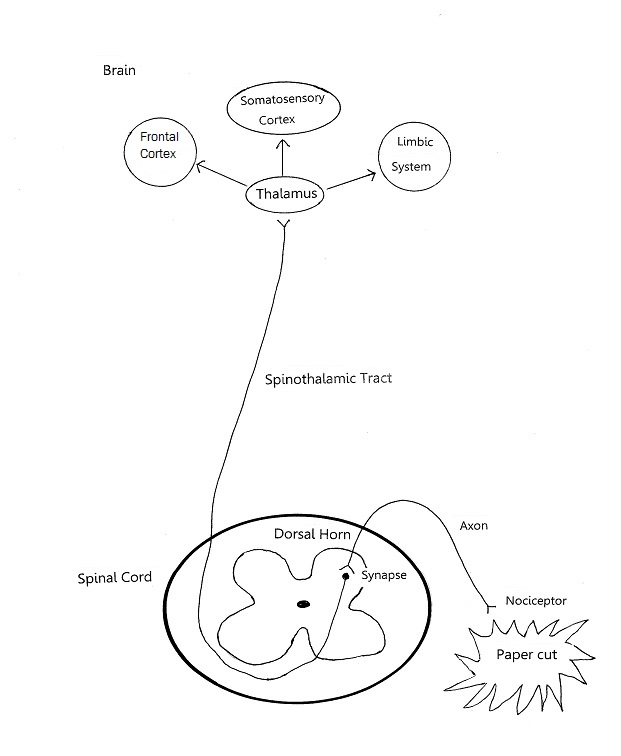
The Withdrawal Reflex
In the last blog, I described what happens when you get a paper cut, how the pain signal is transmitted to your brain for you to feel the pain.
Here is a modified diagram from the last post, showing what happens even before the signal reaches your brain:
Before you were even aware of the pain from the paper cut, you probably reacted involuntarily, e.g., pulled the piece of paper away from your finger, or pulled your finger away from the paper, or both. This is a reflex response, called a withdrawal reflex, and happens at the spinal cord level (a spinal reflex) cord to sudden pain. Motor nerve fibres (motor neurons) are activated to bring about arm muscle contraction, to pull away.
This reflex helps to protect the body from damaging stimuli.
The same thing happens when you touch a hot stove. You immediately whip your hand away without even thinking, and before the pain sets in. Without this spinal reflex, you might leave your hand there until you feel the pain before you removed your hand, at which point you may have severely burnt your hand.
This is your amazing body.
In the last blog, I described what happens when you get a paper cut, how the pain signal is transmitted to your brain for you to feel the pain.
Here is a modified diagram from the last post, showing what happens even before the signal reaches your brain:
Before you were even aware of the pain from the paper cut, you probably reacted involuntarily, e.g., pulled the piece of paper away from your finger, or pulled your finger away from the paper, or both. This is a reflex response, called a withdrawal reflex, and happens at the spinal cord level (a spinal reflex) cord to sudden pain. Motor nerve fibres (motor neurons) are activated to bring about arm muscle contraction, to pull away.
This reflex helps to protect the body from damaging stimuli.
The same thing happens when you touch a hot stove. You immediately whip your hand away without even thinking, and before the pain sets in. Without this spinal reflex, you might leave your hand there until you feel the pain before you removed your hand, at which point you may have severely burnt your hand.
This is your amazing body.


 RSS Feed
RSS Feed